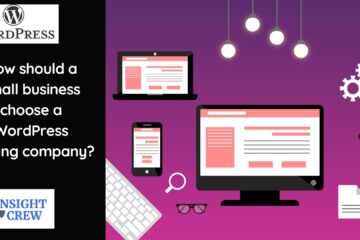A subtopic of the trend toward headless commerce, headless WordPress, has generated a lot of discussions online over the last few years. It might be a challenging idea to grasp for a lot of people.
WordPress’s themes and plug-ins give users a tonne of customization choices, but some users have complained that this arrangement is too inflexible. Instead, we’ll examine how headless WordPress differs from conventional WordPress and how it might increase the flexibility of your work.
If you’re not confident with markup and programming languages like HTML, CSS, or JavaScript, you might discover that hiring a professional developer is more advantageous. You might require someone with experience using multiparadigm programming languages like C# and strict Java if you want to create robust applets and web services.
After outlining your options, let’s get into what makes headless WordPress unique from conventional WordPress.
Basic WordPress
PHP is used by traditional WordPress to create your website’s front end. It accomplishes this by creating visual HTML components on the fly based on the themes and material you enter into WordPress’s interface.
All of this turns into your website’s front end and back end. PHP is quick and dependable, but it has some restrictions. What if you wish to create the front end of your website using a different scripting language or website framework? WordPress headless is useful in this situation.
What Sets Headless WordPress Apart
Headless WordPress removes front-end development from its control. In other words, you are not limited to creating the front end of your website using WordPress’ PHP code. Even though you can only assign the WordPress dashboard to build the backend, you can still use it.
After that, you can utilise a different framework to build your website’s user interface. Because you’re still using WordPress for your website’s “body,” but a different programme for its “face,” this is why it’s termed “headless.” Therefore, you are only using the WordPress dashboard for data, not for presentational purposes.
Headless A more adaptable content management system is WordPress (CMS). Furthermore, it offers users more choices for web building. You may use a JavaScript-based framework like Angular, Vue, or REACT, for example. Alternately, you might decide to use another PHP framework like Laravel, CodeIgniter, or Symfony.
You utilise these tools for the front end, and then WordPress’ REST application programming interface is used to retrieve your data (API). The front and the backend of a headless WordPress installation typically reside on distinct servers. The REST API for WordPress makes it easier for users to communicate between these servers, or between the head and the body.
You can avoid creating and hosting your own backend thanks to this. Of course, you could pay a developer to do it for you, but in most circumstances, that would be more expensive. A backend developer should cost at least $60 per hour, which can be expensive for large enterprises. The WordPress dashboard gives you greater power and is accessible to both inexperienced and seasoned developers.
Because every development environment is unique, there are various configuration needs. The majority of the time, you’ll need to install a fresh copy of WordPress and connect a database on the framework’s IDE. The WordPress API will then need to be configured from the dashboard.
Thankfully, most frameworks include tutorials to assist you in getting started. The most well-liked frontend framework options include:
- React
- Angular
- Vue.js
- Ember.js
- jQuery
- Semantic-UI
- Foundation
Traditional vs. Headless Comparison
So how does headless WordPress stack up against standard WordPress? Let’s talk about the advantages and disadvantages of each to make it clearer:
Benefits of Classic WordPress
A number of unconventional solutions: If you choose to continue with conventional WordPress, you have access to the full WordPress ecosystem. This contains each and every plugin, shortcode, slider, gallery, and theme that is offered. They are all thoroughly examined and guaranteed.
Rapid development: WordPress’s default interface is simple to use. You are given access to all of its visual components via a wizard-like user interface. Additionally, many resources are available to assist you in making the most of classic WordPress. Additionally, you do not need to create your own themes from scratch. You have the option to buy them or use one of the many free themes offered by WordPress. You may easily create web pages with lots of visual appeal with these components.
WYSIWYG experience: Using the visual editor in WordPress, you can instantly see how your website will appear. You also chose to buy add-ons like Elementor or WP Bakery to help you envision your ideas.
The drawbacks of conventional WordPress
Limited to WordPress’s features: WordPress gives you access to a powerful toolset, but improper use can make it constructive. For instance, developing more dynamic applications, like a progressive web application, is practically impossible.
WordPress Headless Advantages
Compartmentalization: The main advantage of headless WordPress is that it allows you to use WordPress as your backend and a third-party solution as your frontend. They can work independently but integrate with each other. If anything should go wrong, it’s easier to troubleshoot which component is at fault.
Versatility: Headless WordPress provides you with a greater diversity of tools to create more functional websites and apps. For instance, you can implement a framework such as Gatsby for fast static web pages. Additionally, you can work with third-party Integrated Development Environments (IDEs) to build more specialized web apps.
More refined control: Headless WordPress gives you more control over your project’s presentation. It provides you with more frontend customization because you have more options for your layout and component positioning.
Additional alternatives for publishing content: Headless Because WordPress supports cross-platform publishing, you are not limited to web apps. For instance, you can develop desktop and/or mobile applications using the WordPress API.
Problems with Headless WordPress
Less user-friendly: The primary benefit of conventional WordPress is its simplicity. It would be simple for another content creator or client to grasp how to use your WordPress project after you give it over to them. However, headless WordPress projects could be more challenging to work on as a team (especially for non-developers). It frequently takes time and effort to work between your frontend framework and the WordPress backend, especially if you need to learn about frameworks like Angular and React. It would be best to document your development process if you plan to use headless WordPress.
More expensive: Setting up headless WordPress could be more expensive than doing it with the standard version. The frontend API/framework, the development environment, and the WordPress dashboard/API are frequently extra fees.
WordPress Headless Solutions
Let’s examine the tools you have now that we are clear on what headless WordPress is. Both frameworks and plugins are included in the list of possibilities below. Your headless WordPress development experience ought to be streamlined by these technologies. Before starting, it’s crucial to remember that every development environment differs from the next, necessitating a separate set of parameters.
Top WordPress Headless Frameworks
The framework you choose to construct your front end will ultimately determine how well your headless WordPress project turns out. Both the functionality and accessibility of each framework vary. You’ll see that in the aforementioned guide, we just touched on a few of them. Again, if you intend to handle things on your own, you won’t get lost. Each framework offers a collection of tutorials. They also have strong online communities you can check out if you ever run into trouble.
AngularJS: Angular JS is an open-source JavaScript framework designed primarily for building single-page web applications. It’s a fantastic substitute for React. It is presently maintained by Google.
Vue.js: Vue.js is a free JavaScript framework for creating user interfaces. Strong templating and the model-view-model (MVVM) architecture of Vue.js are what set it apart from other frameworks.
Gatsby JS: Gatsby is a static website and page generator. Gatsby creates websites without the need for data sources, which sets it apart from traditional frameworks and techniques. These websites load more quickly as a result. On top of a content management system like WordPress, you develop Gatsby.
jQuery: It would be impossible to discuss JavaScript frameworks and libraries without mentioning jQuery. It has been around since 2006 and was first created to simplify JavaScript web development. It continues to be the most widely used JavaScript library available right now. You only need WordPress’ UI library for headless development.
Basis: CSS has advanced considerably. These days, CSS and HTML alone can be used to create a whole webpage. This idea is the foundation of the Foundation. It offers grids and templates to make it easier for you to build front ends that use HTML and CSS. If you require them, it also includes JavaScript extensions.
Faust.JS: Created primarily to assist users in creating frontend GUIs for headless WordPress, Faust is a Javascript framework. It is based on Next.JS and retrieves data using GraphQL. With Faust, you can construct your website on the server-side or render it statically (SSR) (SSG).
The Best WordPress Plugins For Headless Development
It’s crucial to choose the correct framework. But to reiterate, developing a headless WordPress installation is not simple. On the other hand, you can simplify things for yourself by including one or more plugins. Here are some of the top ones.
WP Gatsby: When using the Gatsby JS framework, WP Gatsby enables you to leverage WordPress as a data source. It facilitates the connection of headless WordPress to Gatsby.
WPGraphQL: WPGraphQL is an alternative to WordPress’s implementation of the Rest API. It effectively enables the communication between your frontend GUI and WordPress’s backend via a series of queries or instructions.
Headless CMS: A plugin that expands the functionality of WordPress’s built-in headless APIs is known as a headless CMS. It includes new widget customization options, unique Rest API endpoints, picture submissions for categories, etc. It is compatible with Gatsby and WooCommerce.
FaustWP: A plugin that integrates with the Faust.JS framework. This involves easing communication between the WordPress backend and frontend and performing headless migration.
Headless WP: A miniOrange alternative to the Headless WP plugin. It greatly simplifies the switch to headless WordPress. The WordPress front end can be easily disabled so that you can access any WP table or API endpoint to retrieve data.
Final Reflections
WordPress is a fantastic CMS, therefore it seems sensible that it has a sizable market share. However, there are occasions when you simply need a bit more flexibility. Although headless WordPress provides greater flexibility and scalability, it may be unnecessary for straightforward projects. Therefore, make sure you’ve properly investigated all of the plugins available to you before you start looking around for frameworks. When you are satisfied that you have exhausted WordPress’ capabilities, you should think about going headless.


